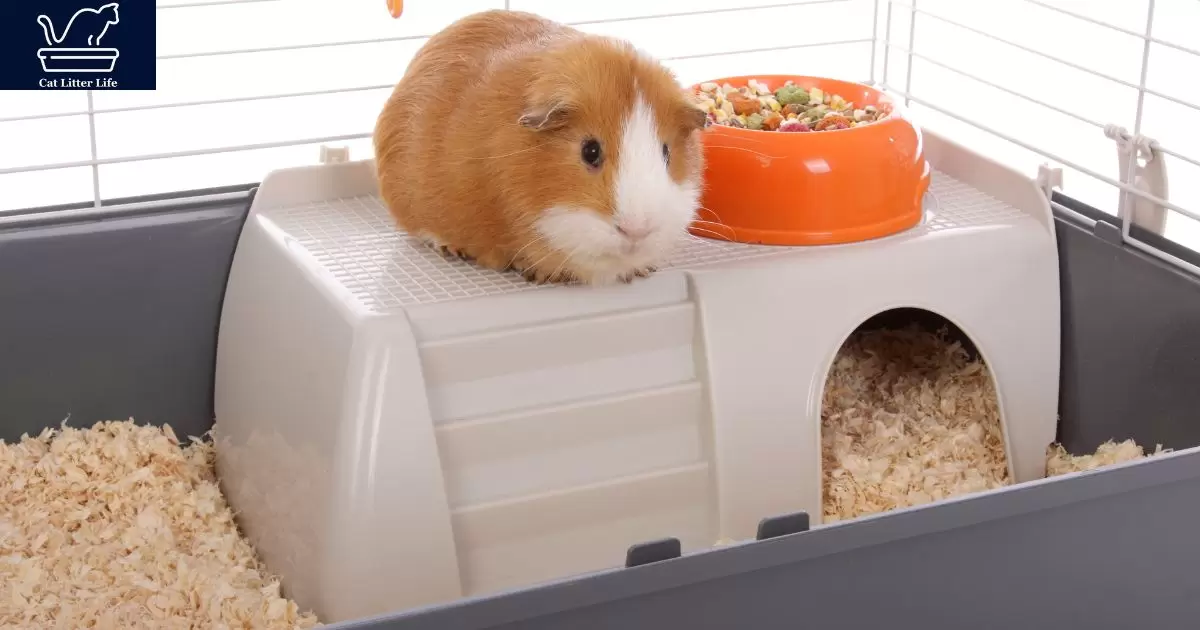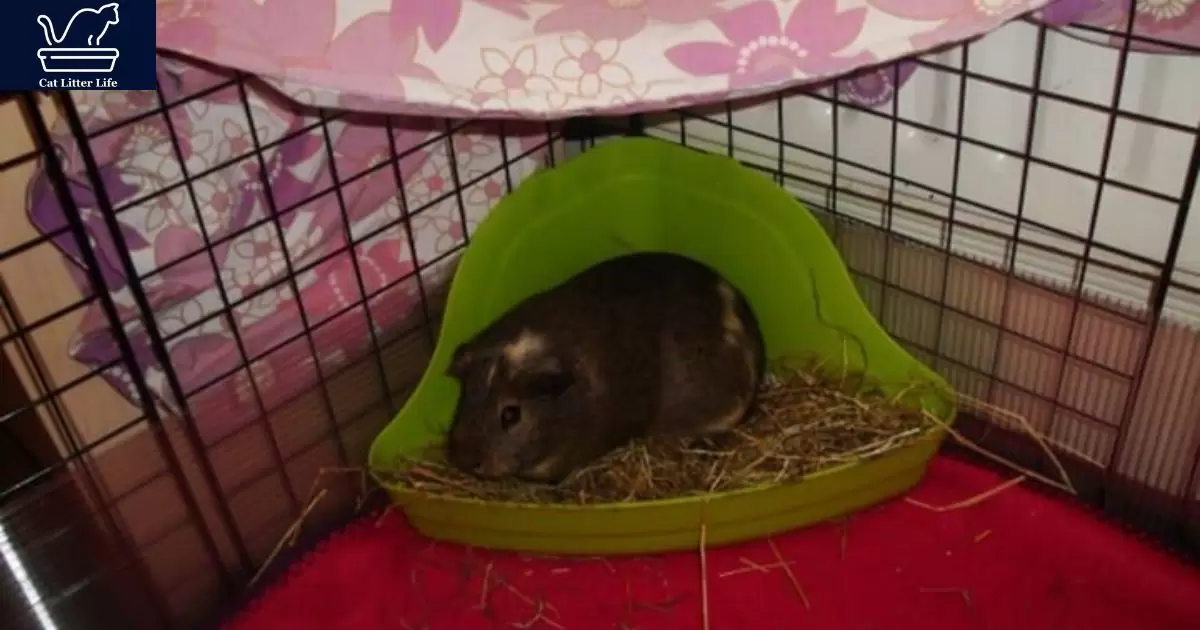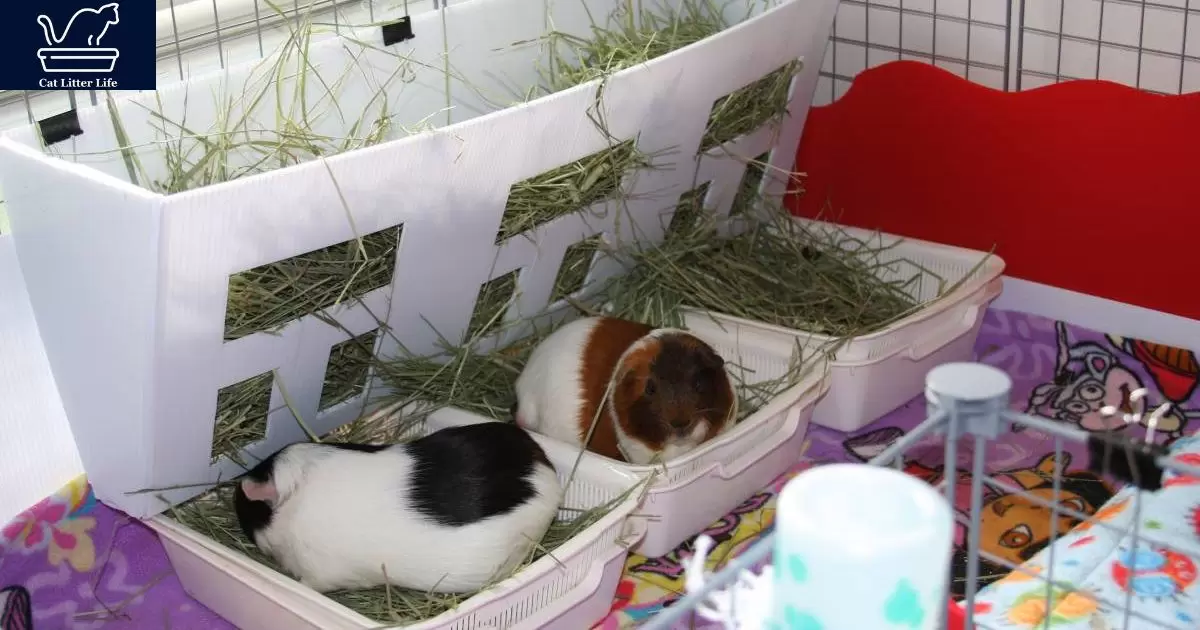Cat litter is an absorbent fabric used by cats to absorb urine and feces. It generally contains clay, silica gel, or other porous granules that soak up moisture. Some cat litters also include baking soda or activated charcoal to assist control of odors. Guinea pigs produce an extensive amount of urine and waste, so cat litter can help soak up messes in their cages.
Can I use cat litter for guinea pigs? This is a common query for guinea pig owners searching out a powerful and lower-priced litter option. While cat clutter does take in moisture properly, now not all types are safe or perfect for guinea pigs due to worries approximately dust, chemical compounds, and fragrances. Proper studies are needed to determine which cat litters are non-toxic and comfortable for touchy guinea pig toes.
When choosing cat litter for guinea pigs, an unscented, dirt-unfastened variety is high-quality. Paper-based total litters also are an option as they are noticeably absorbent and chemical-loose. The muddle has to be spot wiped clean daily and replaced weekly to keep the guinea pig habitat clean and healthful. Proper clutter is a critical part of guinea pig care.
Key Factors to Consider With Cat Litter as Guinea Pig Bedding
Cat clutter is primarily tailored for felines, not for guinea pigs. Therefore, it’s essential to consider certain factors before opting to use it as bedding in a guinea pig enclosure. The absorbency, dust levels, and scent are paramount considerations. Guinea pigs, in comparison to cats, have more specialized requirements concerning urine absorption, sensitivity to dirt, and odor management. This is particularly true when selecting lightweight cat litter for their bedding.
Cat clutter may be very absorbent with the aid of nature to correctly absorb cat urine. The splendid absorbent properties that paint nicely for cats might not be healthy guinea pigs. Guinea pig urine tends to puddle on top of relatively absorbent litter. This can cause the guinea pig’s toes to last damp if the muddle soaks up the urine too fast.
Guinea pigs additionally have very touchy breathing systems. Dusty cat clutter can aggravate their nasal passages and airways. Litters made for cats may contain more dust or finer particles than ones specifically formulated for guinea pigs. Scented cat litters help mask odors for cats and their owners. But guinea pigs have a strong sense of smell and may reject heavily scented beddings. The chemicals used for fragrance could also irritate their nose and skin.
Tips for Trying Cat Litter with Guinea Pigs
Owners who wish to test out cat litter for their guinea pigs can follow some tips to increase their chances of success:
- Choose unscented, lightweight clay or natural fiber litter to reduce dust and chemicals.
- Spot clean daily and fully change out litter weekly to prevent ammonia build-up.
- Place litter in a thin layer or mix with hay to encourage evaporation.
- Monitor guinea pigs closely for signs of respiratory issues while adjusting to new litter.
- Provide hide houses and fleece pads for guinea pigs to rest off the litter surface.
- Switch back to a guinea pig-specific bedding if any irritation or discomfort occurs.
Pros of Using Cat Litter for Guinea Pigs
Despite some drawbacks, there are a few potential benefits to using certain cat litters for guinea pigs:
- Cost: Cat litter is widely available and often cheaper than specialty small pet bedding. Owners can save money on an ongoing expense.
- Odor control: Unscented, low-dust cat litters contain absorbent materials like clay that help reduce urine odors. This can keep the guinea pig cage smelling fresher.
- Easy cleaning: Clumping clay litters are very convenient to scoop out soiled areas daily. This simplified cleaning can save time.
- Availability: Cat litters are generally sold at grocery shops and puppy shops. Guinea pig owners can also have a less difficult time locating cat clutter on short observation than specialized guinea pig bedding.
- Natural types: Some natural cat litter like those made of wood pellets or wheat straw may appeal to owners looking to avoid synthetics.
Cons of Cat Litter as Guinea Pig Bedding
There are also some notable disadvantages of using traditional cat litter for guinea pigs:
- Dust: Clay clumping litter and lightweight fluffy litter marketed to cats may contain fine dust that can irritate guinea pigs’ respiratory tract.
- Absorbency: Highly absorbent litters can draw urine away from the surface which may lead to damp guinea pig feet. The urine smell is also less likely to evaporate.
- Odor masking: Heavily scented litters contain perfumes and chemicals that guinea pigs may find offensive or irritating.
- Ingestion risk: Eating cat litter can cause intestinal blockages or upset the guinea pig’s digestive system. They may nibble on certain litters.
- Foot injuries: Rough textures or large granules in some clay and crystalline litter can scrape delicate guinea pig footpads.
- Allergies: Cat litter with artificial fragrances, dyes, or clay may provoke allergy symptoms in sensitive guinea pigs.
Suitability of Common Cat Litter Types for Guinea Pigs
| Cat Litter Type | Recommended for Guinea Pigs? | Notes |
| Clumping clay | Sometimes | Unscented, low-dust options may work. Increased impaction risk. |
| Crystalline silica gel | No | Can cause respiratory irritation and foot injuries. |
| Lightweight/fluffy | No | Contains fine dust unsuitable for guinea pigs. |
| Natural fiber/paper-based | Yes | Look for fragrance/dye-free with low dust. |
| Wood pellets | Yes | Avoid scented versions. May need an extra absorbency layer. |
| Newspaper pellets | Yes | Opt for ink-free pellets to prevent guinea pig ingestion. |
| Wheat straw pellets | Yes | Ensure it has low dust and is chemical/fragrance-free. |
FAQ’s
What types of cat litter can I use for my guinea pigs?
Unscented paper, wood, or wheat straw litters are safest. Avoid scented, dusty, or clay-clumping types.
How often should I replace the cat litter?
Fully replace the litter once a week to prevent ammonia buildup. Also, spot clean daily.
Why can’t I use clumping clay litter?
It can be harmful if eaten and doesn’t allow urine to evaporate well.
Should I mix cat litter with other bedding?
Yes, adding some hay helps absorb moisture and gives them areas to walk on.
How do I know if the litter hurts my guinea pigs’ feet?
Check their footpads for scrapes or redness. Signs of respiratory distress also indicate an unsuitable litter.
Conclusion
Cat litter can be used for guinea pigs but it needs to be the right type. The litter should not have dust or strong smells. Natural litters like paper, wood pellets, or wheat straw tend to work best. They soak up pee while still letting it dry out a little. Clay litters may be okay if they are lightweight and unscented. But the small pieces could hurt guinea pig feet.
Guinea pigs are not like cats. Their noses and feet are more sensitive. They also pee differently than cats. Cat litter that clumps into a solid lump does not work as well. Guinea pig owners should spot clean daily and fully replace the litter each week. This keeps the cage clean and prevents illness.
Monitoring guinea pigs closely on any new litter is important. If they get sick or seem bothered by it, switch back to bedding made just for guinea pigs. The right litter helps absorb smells and messes to keep guinea pigs happy and healthy.










